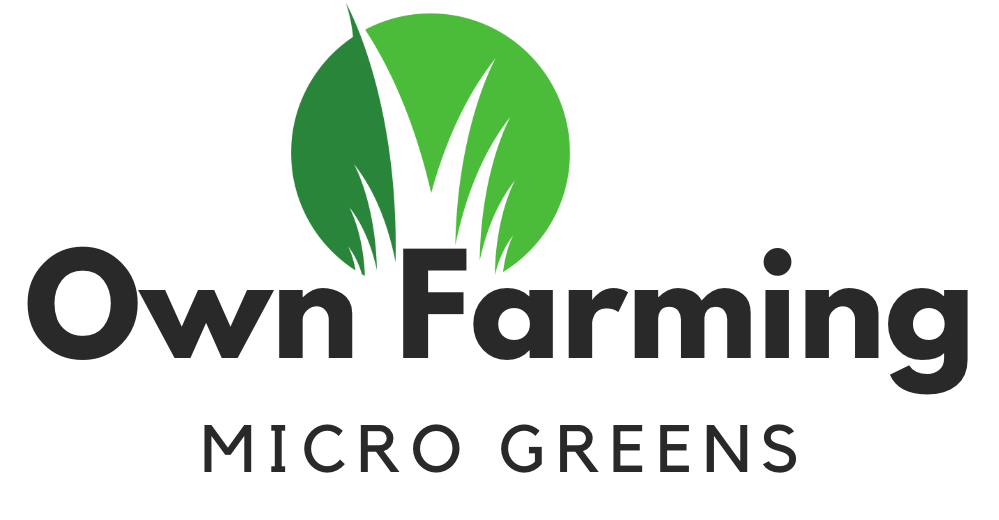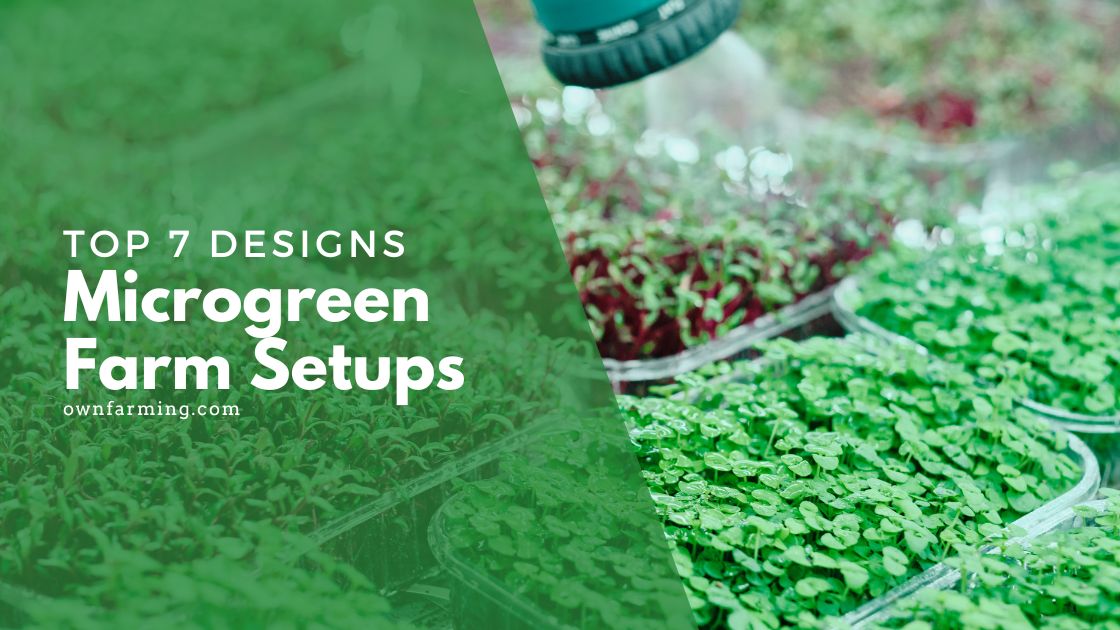If you’re looking for an efficient and sustainable way to grow microgreens, then you need the right microgreen farm setups. Small-scale microgreen farms are becoming increasingly popular due to their easy maintenance and high yields, but it can be difficult to find the perfect design that meets your needs.
To help out with this process, we have compiled a list of seven innovative designs for optimized growth. Each design offers its own unique benefits including increased efficiency, cost savings, and environmental sustainability. Whether you’re just starting out or already have an established operation, these microgreen farm setups will provide the foundation for successful microgreen farming!
Microgreen Farm Setups Quick Guide
With efficient designs and minimal maintenance, these systems provide an ideal foundation for successful small-scale microgreen farming! For more details continue below.
1. The Tray System
2. Hydroponic Systems
3. Vertical Farms
4. Greenhouses
5. Aquaponic Systems
6. Raised Bed Systems
7. The Rack System
Microgreen Farm Setups: 7 Designs
No matter which designs you choose, these seven innovative microgreen farm setups offer something for everyone.
1. The Tray System
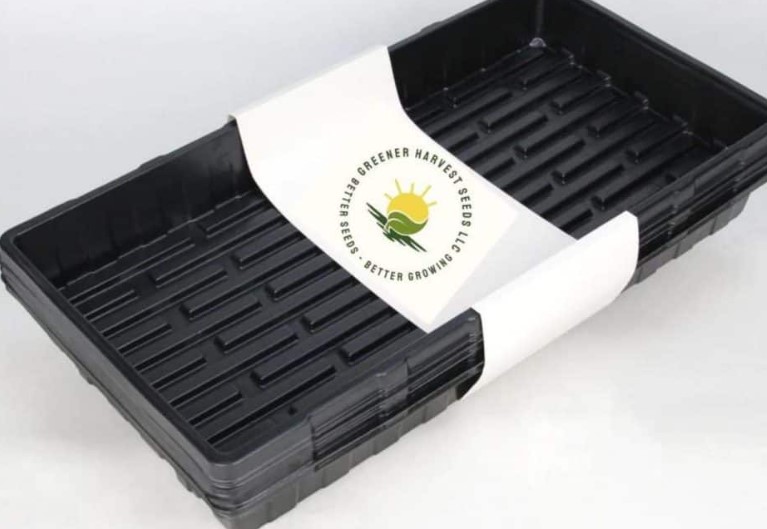
- This is the most popular method for growing microgreens and consists of shallow trays filled with soil and seeds which are then placed in a sunny location.
- Trays can be moved around to optimize light exposure, and excess water will drain away through small holes on the bottom.
- A budget-friendly option is a tray that isn’t of high-quality plastic. These trays are going to be more of a standard plastic that if not treated carefully can break or crack easily.
- However, if you are first getting started and are working on a budget to create your DIY microgreens setup, then basic trays work fine.
2. Hydroponic Systems
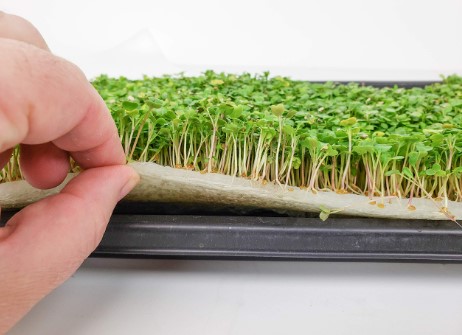
- Hydroponic systems are becoming increasingly popular for microgreen farms as they require minimal maintenance and can be highly efficient.
- In a hydroponic system, nutrient-rich water is circulated through the trays, providing an ideal environment for optimal growth.
- Although hydroponic systems for growing microgreens are costlier than other methods, they bring benefits like easy maintenance, lowered risk of harboring pests and diseases, and reduced messiness.
3. Vertical Farms
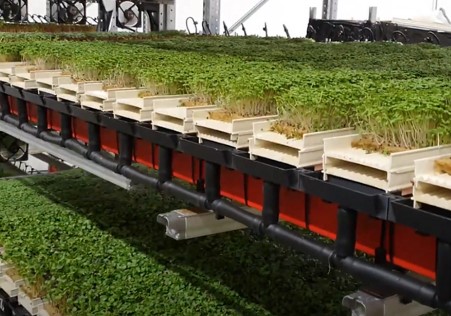
- If you’re short on space, then a vertical farm might be the best solution. Vertical farms are essentially shelving units that stack trays of soil or other growth mediums at different heights – allowing you to maximize production in small areas.
- Vertical farming offers the advantage of producing higher crop yields in limited space by not being restricted to the ground.
- Moreover, it enables you to regulate the climate, irrigation, and fertilization, thereby resulting in increased yields and minimizing environmental harm.
4. Greenhouses
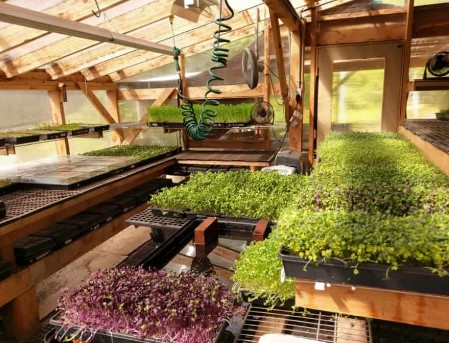
- Greenhouses offer year-round growing potential and can help protect crops from unfavorable weather conditions. They also provide excellent insulation, allowing farmers to maintain perfect growing conditions for their microgreens.
- The type of greenhouse that is suitable for growing microgreens is dependent on your climate and harvest goals. If your aim is to extend your growing season and enjoy harvesting microgreens for personal use, a basic setup will suffice.
- Please note that microgreens are sensitive to freezing temperatures, therefore, it is important to keep them in a relatively warm environment. In areas where the temperature rarely drops below freezing, it should be sufficient to use an unheated greenhouse.
5. Aquaponic Systems
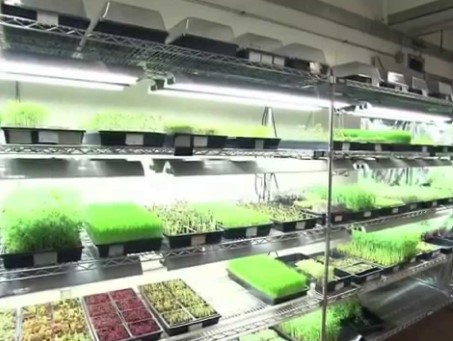
- This is one of the most sustainable options available, combining aquaculture and hydroponic systems to provide a symbiotic environment for plants and fish. The waste from the fish provides nutrients for the plants, while the water from the plants helps to filter and maintain a healthy environment for the fish.
- To begin growing microgreens using aquaponics, you should first locate an appropriate area.
- The tank size required for raising fish in your system depends on the size of your grow bed and the type of fish you choose to raise.
- To move water between the fish tank and grow bed, you’ll need a pump, piping, and plumbing fittings.
- After ensuring that your system is functioning properly, check if the water is suitable for the particular type of fish you have selected, and then proceed with adding the fingerlings.
- First, soak the growing mat in water. Then, place it on top of your media bed and sow the seeds onto the growing mat. When you flood the media bed with water, the growing media in the bed will hold water and nutrients which will be absorbed by the grow mat for the microgreens.
6. Raised Bed Systems
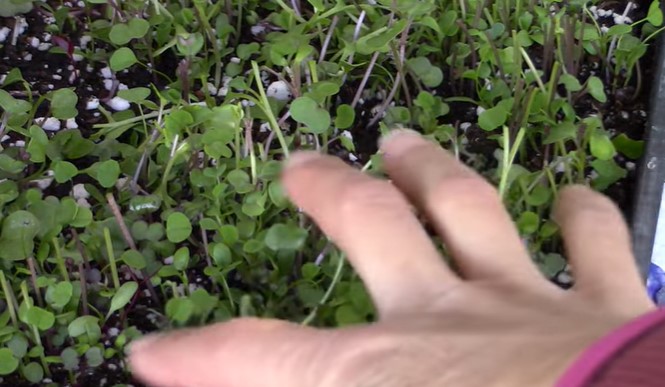
- For those with limited space, raised bed systems are an ideal solution. Raised beds are easy to construct and can be customized for maximum efficiency and production potential.
- Placing your microgreens in a raised bed can simplify planting and harvesting. This method elevates them, reducing the amount of bending required to access them.
- Although growing microgreens in a raised bed have a smaller space available, you can still grow a sufficient amount in an average-sized raised bed.
7. The Rack System
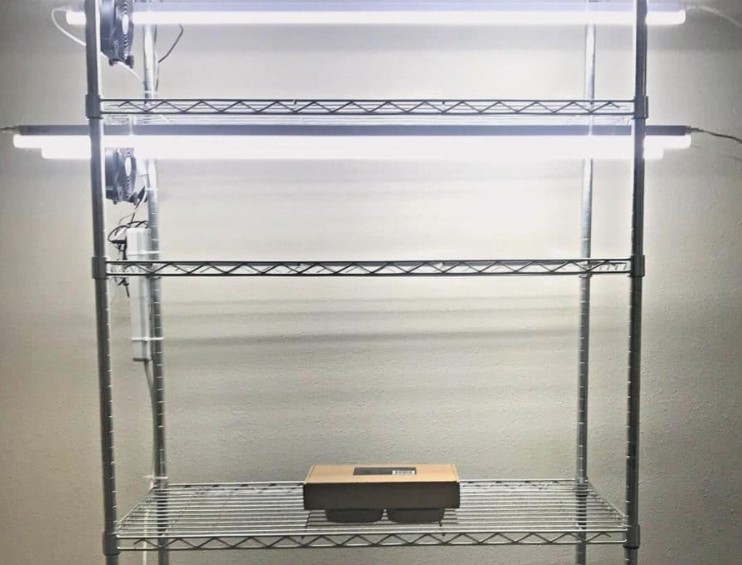
- For a standard DIY microgreens setup, it is best to use a sturdy metal storage rack.
- It is advised to choose a 6-shelf rack that is 48 inches in width and 18 inches in depth.
- This site allows you to place 4 trays on each shelf, resulting in a total of 20 trays for one rack system.
Common Questions About Microgreen Farm Setups
What is microgreen farming?
Microgreen farming is a way of growing small greens that are usually less than 2 inches tall. They are harvested soon after sprouting, making them more nutritious than regular vegetables. Microgreens are full of fiber, vitamins, and antioxidants, and can enhance the taste and nutrition of various foods.
There is a wide variety of microgreens with distinctive flavors and nutritional benefits. The popular kinds include arugula, basil, beets, broccoli, chard, cilantro, dill, kale, kohlrabi, lettuce, mint, peas, radish, and sunflower.
What is the best setup for microgreens?
For growing greens indoors, you can use a piece of plywood that’s been cut to size and has a handle mounted on top. Alternatively, you can use a flat tray with bricks placed inside. Place the trays under lights with the light positioned about 12 inches above them. Let the greens grow for 4 to 7 days until they’re ready to be harvested.
What are the pros and cons of microgreen aquaponics?
Pros:
- Microgreens are nutrient-dense, meaning they contain all the same health and nutritional benefits as full-grown plants but in a smaller, bite-sized form.
- Microgreens aquaponics systems can be set up vertically in small spaces, making them space efficient.
- Setting up a small DIY microgreens aquaponics system is easy, and even if you make mistakes, the losses are minimal.
- Microgreens are highly demanded and profitable crops. When grown using aquaponics, they have the added advantage of being fertilized only with organic materials.
- With a microgreens aquaponics system, you can harvest both microgreens and fish.
Cons:
- To have a steady supply, you have to check your microgreens daily and replant them every two weeks. This process can take up some time.
- Excess microgreens can be challenging as they don’t stay fresh for long and aren’t suitable for shipping.
- Microgreens are highly responsive to even minor changes in temperature, light, and quality of water.
- Microgreens don’t provide enough nutrients to support many fish, so you’ll need to add more food to their diet.
Video Professional Microgreens Setup
Are you looking to start a microgreen farm? In this video, you’ll get to know about professional setups for microgreen farms. Get ready to learn about the best ways to set up your own successful microgreen farm with ease.
Final Thoughts
Small microgreen setups can be a great way to get started with growing your own food. Innovative designs such as vertical farming and aquaponics systems offer many advantages for those interested in setting up their own microgreen farm. With the right setup, you can enjoy fresh produce all year round!
Not only that, but these innovative design approaches are also more environmentally friendly than traditional farming methods. If you’re ready to take the plunge into gardening on a larger scale, consider investing in one of these unique microgreen farm setups today – it’s sure to pay off in both deliciousness and sustainability!
